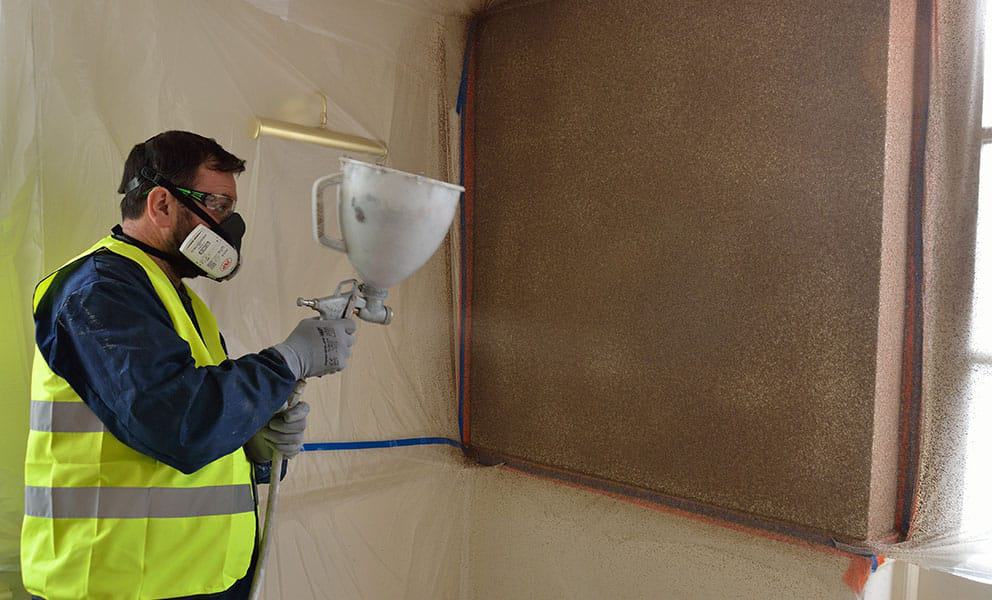
That said, standard plaster doesn’t offer much in the way of thermal insulation. In this post, we’ll take a look at the advent of thermal insulation plaster and how it can improve your walls.
Traditional plaster is made up of water and sand plus cement, gypsum or lime. It’s usually bought as a powder, before being mixed into a stiff paste, which is ideal for applying to walls.
Because the plaster coats the wall, it does offer some form of insulation. In other words, the wall becomes slightly thicker, meaning a bit less heat passes through. However, it’s far from a significant impact.
Thermal insulation plaster, on the other hand, refers to plaster-like mixtures which have been infused with insulative materials. A great example is SprayCork, which uses the natural thermal insulation properties of cork to make it harder for heat to pass through your walls.
SprayCork is applied in two 3mm coats, before being finished with a 2mm skim of plaster. The end result is a smooth surface which can be decorated with paint or paper, complete with insulation underneath.
To really understand the benefits of plaster with insulation, you only have to look at the alternatives and the significant drawbacks that come with them.
First is cavity wall insulation, which is only suitable for external walls – and only an option for those which have been built with cavities. Even then, it can create issues with damp if rainwater penetrates the brickwork because of cracks, unsheltered walls or wind-driven rain. Once that happens, the insulation itself will also be ineffective.
Another alternative is to add insulation sheets or boards underneath plaster. To do so, you have two options:
In stark contrast, SprayCork’s final coating is just 8mm thick. It’s suitable for any wall surface on the inside of a building. And it actually makes walls more resistant to damp, with a water-repellent layer that damp and mould can’t form on.
Used as an interior wall coating, SprayCork has been found to reduce heating bills by as much as 15%. It does so without compromising on your space and without damaging the environment. If you would like to find out more about SprayCork, please contact our team on 01484 442420 or email [email protected].
Alternatively, we can put you in touch with a local approved applicator for a quote.
"*" indicates required fields